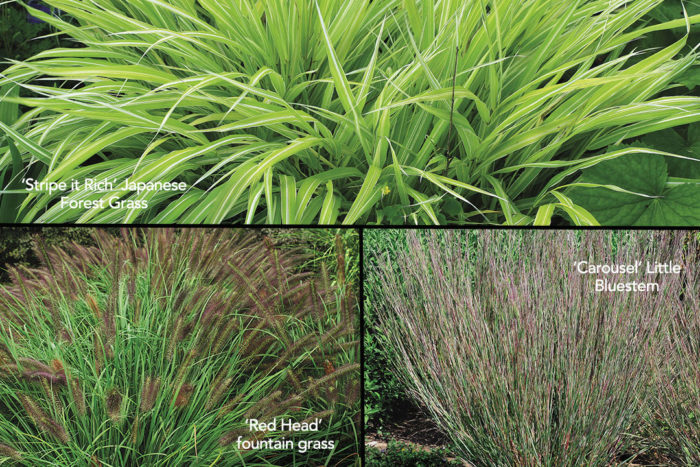
I think grasses suffer from lumping. I’m guilty of it myself, many times ending a list of companion perennials with the phrase “and some ornamental grasses.” This gives the impression that all grasses are the same and interchangeable. They’re not, and when we trialed dozens of some of the newest and most popular types at the Chicago Botanic Garden, the differences between them became even more clear. While I still feel like a novice where grasses are concerned, my appreciation has deepened as I’ve opened my eyes to their uniqueness. Rather than treating grasses as footnotes in the garden, I now see them as distinctive plants. Grasses are unsung heroes—often perceived as sidekicks to flashier perennials or relegated to the background in a landscape. But certain grasses are so much more than workaday plants, and they deserve a prime spot where their notable qualities can be seen and heard. These select grasses are a sensory delight of sight, sound, motion, and smell. The following top performers earned excellent marks in our trial because of their incredible architecture, beautiful inflorescences, and unfaltering performance despite weather inconsistencies.
Top performers
These grasses put the competition to shame when it comes to looks, behavior, and toughness.
Watching ‘Stripe It Rich’ Japanese forest grass (Hakonechloa macra ‘Stripe It Rich’) gradually bulk up is worth the wait. Like other variegated forms of Japanese forest grass, ‘Stripe It Rich’ is a slow grower at the start, coming into its own by the third year. Golden yellow leaves, striped with white, need some sunlight to remain vibrant; for optimal color, plant it in full to partial sun and in a moist, organic soil. In our trials, the plants were in deep shade, so the leaves were lime green by midsummer. Japanese forest grass is among the most elegant of grasses, with gracefully cascading leaves that give the feeling of movement on even the calmest day. My cat loves nibbling on this grass, and unfortunately, rabbits love it, too.
I’ve grown ‘Carousel’ little bluestem (Schizachyrium scoparium ‘Carousel’) longer than any other little bluestem and have always admired its first-rate performance. ‘Carousel’ is a compact grower with blue-green leaves that are red-purple–tinged and held against reddish stems. ‘Carousel’ is a kaleidoscope of softly muted colors throughout the seasons: Blue-green, red-purple, pink, copper, and mahogany all make an appearance. The wispy silvery seeds are especially eye-catching in autumnal light. A broad, bowl-shaped habit marks ‘Carousel’ as different from other little bluestems, and its slender stems stay upright all winter. Little bluestems are tolerant of average to dry soils but do not like overly wet conditions. This iconic prairie grass is enjoying a renaissance these days thanks to ‘Carousel’ and other fantastic new selections.
‘Red Head’ fountain grass (Pennisetum alopecuroides ‘Red Head’) is another exceptional grass with midwestern roots, but it is not a native. Its lovely arching habit, more fountainlike than other cultivars in the trial, is topped with an eye-popping bouquet of red-purple flowers from midsummer into fall. Its bristly inflorescences—at an implausible size of 9 inches long and 3 inches wide, and looking a bit like giant woolly bear caterpillars—hold their color well into midfall before finally fading and shattering. Golden yellow fall color adorns the long slender leaves into early winter. Fountain grass is a natural for planting in drifts, softening hard lines, and complementing other perennials. To prevent seedlings, deadhead fountain grass before the flowers shatter—or better yet, harvest some blooms shortly after they open for floral arrangements.
But What About Miscanthus?

If you’re looking for drama, look no further than ‘Cordoba’ purple moor grass (Molinia caerulea subsp. arundinacea ‘Cordoba’). At nearly 7 feet tall, it has a larger-than-life presence. Its strong architectural habit is accentuated by the gentle quavering of lofty flowers arched over leafy green mounds. In a small space, one plant is, likely, all that makes sense, but I can only imagine the dramatic display statuesque ‘Cordoba’ would make in large drifts. Its stunning golden yellow fall color, peaking in mid-November in Chicago, is a late-season bonus. Because the flower stems naturally break away, there is no winter interest to speak of. Purple moor grass prefers cool, moist conditions, so supplemental water in the hottest weather will ensure that plants remain healthy and happy.
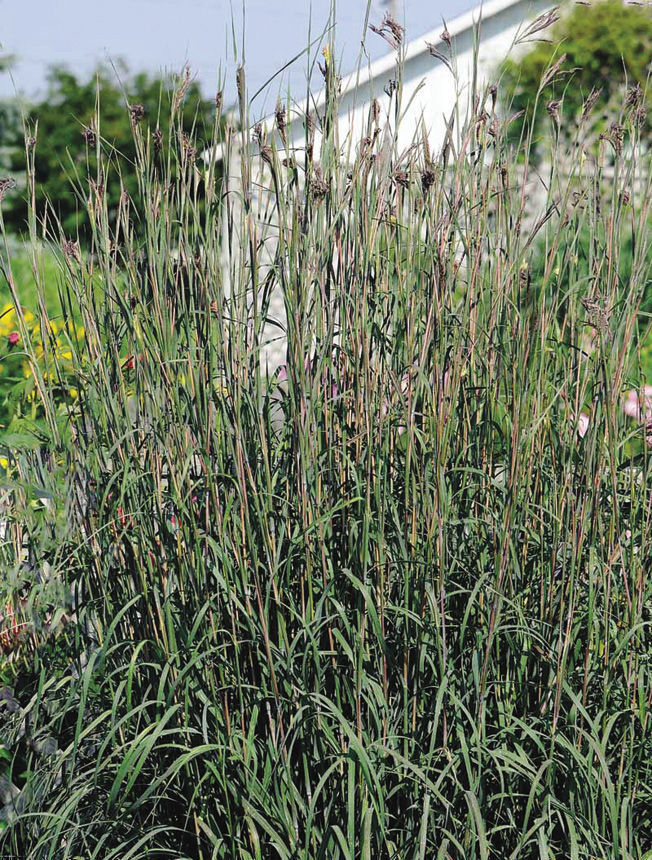
With a name that gives a nod to its native-prairie origins, ‘Indian Warrior’ big bluestem (Andropogon gerardii ‘Indian Warrior’) embodies the best of big bluestem grasses. It is in fine form from spring to fall, with sturdy stems pointing skyward at all times. Big bluestems can top out at 8 feet tall, but ‘Indian Warrior’, at 5 to 6 feet tall, is compact by comparison. Lush, dark green leaves gradually turn red-purple at the same time that the dark purple flowers are in their full glory. The three-part flower, which resembles a turkey foot, is more of a curiosity than something dramatic. Like a smoldering coal, the red-purple color of the stems, leaves, and flowers intensifies heading into autumn. Plant in full sun and in any soil except a wet one and watch ‘Indian Warrior’ catch fire.
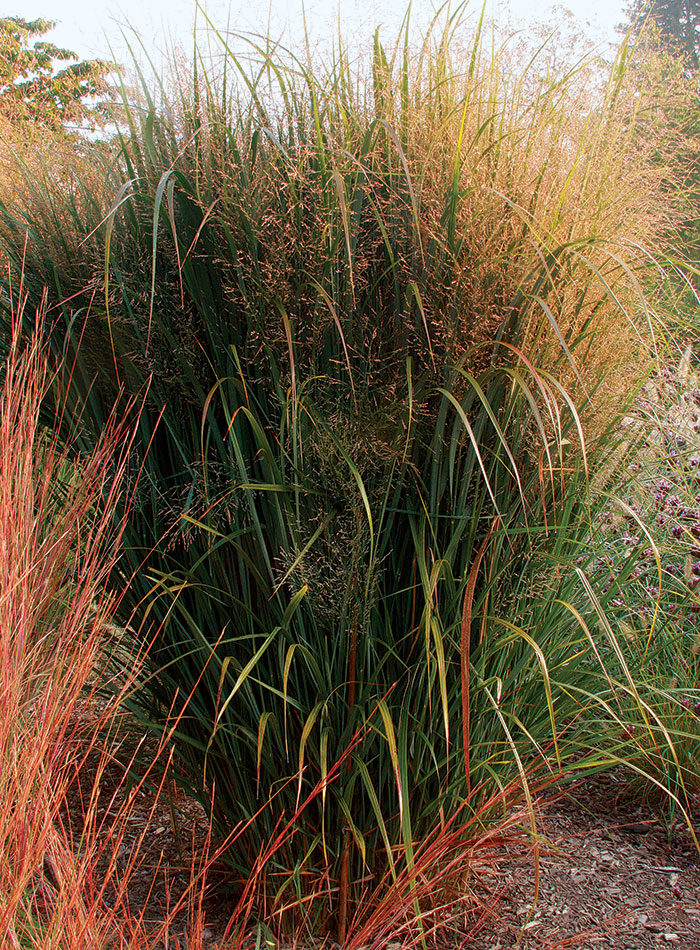
When I first grew ‘Northwind’ switchgrass (Panicum virgatum ‘Northwind’), it was a fairly new plant—a midwestern selection heading swiftly to the national market. Over the years, ‘Northwind’ has proven its worth, standing tall as one of the best switchgrasses ever. Its olive green leaves with a blue-green underside might seem drab when compared to more colorful varieties, such as ‘Dallas Blues’ and ‘Shenandoah’. But when heavy rain and strong winds have toppled other switchgrasses, the rigid stems of ‘Northwind’ stand firm; many of the leaf tips point straight up, rather than curving downward like other cultivars. Clouds of yellow flowers, and eventually purple fruit, float just above lush leaves in late summer. The tidy foliage turns yellow in fall before fading to tan for the winter months. In more than 10 years of observing ‘Northwind’, I can always count on its unwavering habit in any season.
New kids on the block
Although they haven’t been in the trial long enough to get a stamp of approval, these newer selections are showing considerable promise.
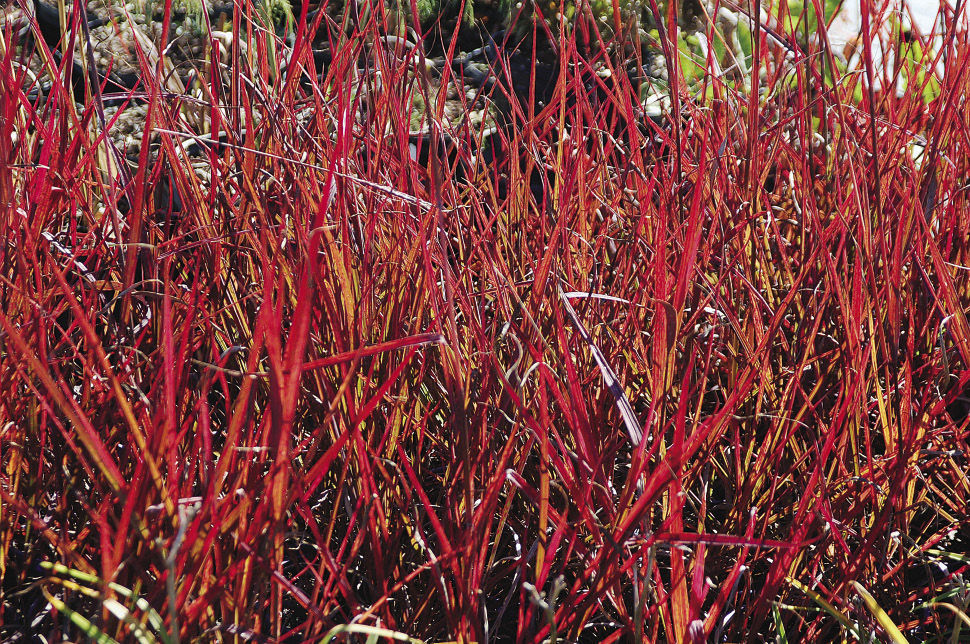
For fall color, nobody does it better than ‘Red October’ big bluestem (Andropogon gerardii ‘Red October’, Zones 3–9). Dark green leaves tipped in burgundy turn full-on burgundy in early fall. As if this color isn’t luscious enough, it changes to brilliant scarlet after a few frosts. The turkey-foot red-purple flowers with orange anthers are borne at the end of red-bronze stems in summer—a color bonanza at every turn. So far, the plants are standing proudly at 6 feet tall and 3 feet wide.
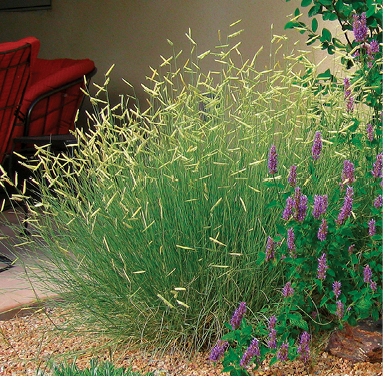
‘Blonde Ambition’ blue grama (Bouteloua gracilis ‘Blonde Ambition’, Zones 4–9) was an unexpected surprise in the first year of the trial. It not only was showy but also reached its full size (37 inches tall and 42 inches wide) in just one summer. A profusion of chartreuse flowers blanketed fine-textured blue-green mounds in midsummer. The blonde seed heads resemble mini pennants fluttering over the plants; they remained intact through winter, providing color and texture—which was another surprise. The species is cold hardy and adaptable to a range of soil types; it even excels in our green-roof garden in just a 6-inch depth of growing medium. We’re hoping ‘Blonde Ambition’ proves just as hardy.
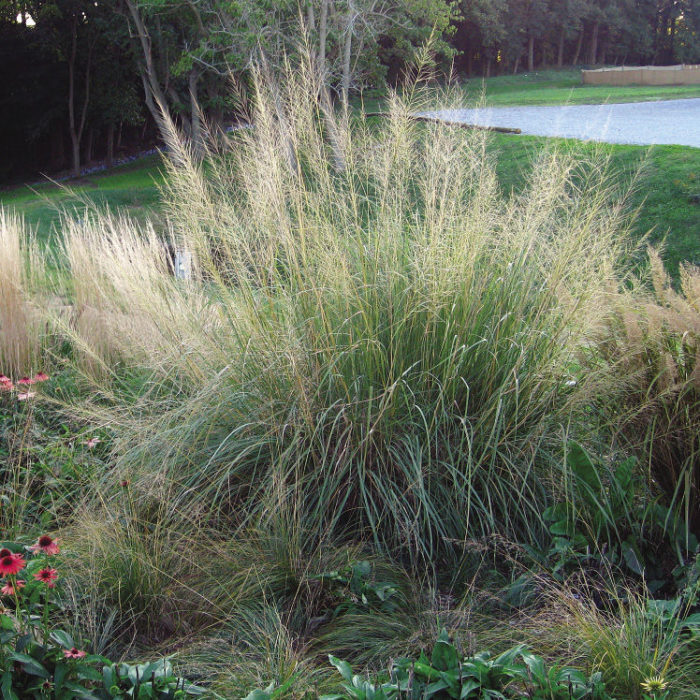
‘Windbreaker’ big sacaton (Sporobolus wrightii ‘Windbreaker’, Zones 5–9) is a recent introduction from New Mexico. With humble beginnings as a utilitarian plan (it was developed as a wind barrier for commercial vegetable fields in the West), ‘Windbreaker’ has a bright future in gardens. It’s a big plant, though, with stems rising 8 to 10 feet tall and 6 feet wide over time. In the first year of the trial, it was 68 inches tall and 58 inches wide, so it’s well on its way to its full size. Touted as a native substitute for gigantic pampas grass (Cortaderia selloana* and cvs., Zones 7–11), ‘Windbreaker’ provides all that drama—and more. Gray-green leaves form a generous mound with large pyramidal green flower clusters soaring high overhead in summer. Big sacaton is not short on positive cultural attributes, either: It’s drought tolerant and adaptable to high-alkaline, saline, and poorly drained soils. Big sacaton is an important conservation and forage plant in the Southwest and a little-known relative of prairie dropseed (Sporobolus heterolepis, Zones 4–9).
Trial Results
What You Need to Know About Ornamental Grasses
Grasses are pretty easy to grow: Their drought tolerance, adaptability to a variety of soils, low maintenance needs, and limited problems with pests and diseases are testaments to their tough character. Full sun is best for most grasses—although, as with every rule, there are exceptions.
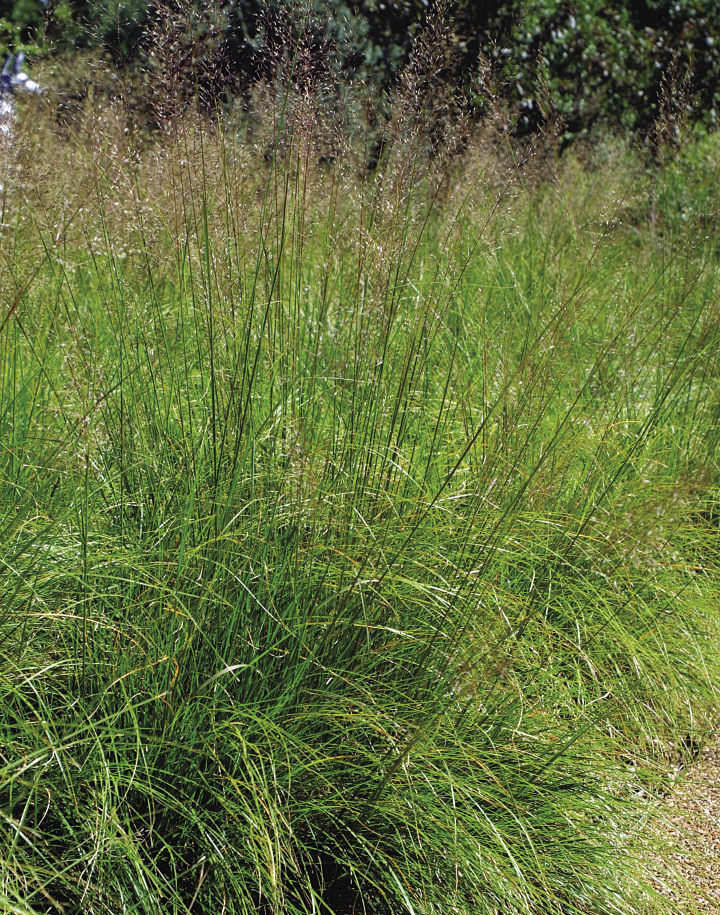
Warm-season grasses
- Big bluestem (Andropogon gerardii and cvs.)
- Fountain grass (Pennisetum spp. and cvs.)
- Japanese forest grass (Hakonechloa macra and cvs.)
- Little bluestem (Schizachyrium scoparium and cvs.)
- Prairie dropseed (Sporobolus heterolepis and cvs.)
- Switchgrass (Panicum virgatum and cvs.)
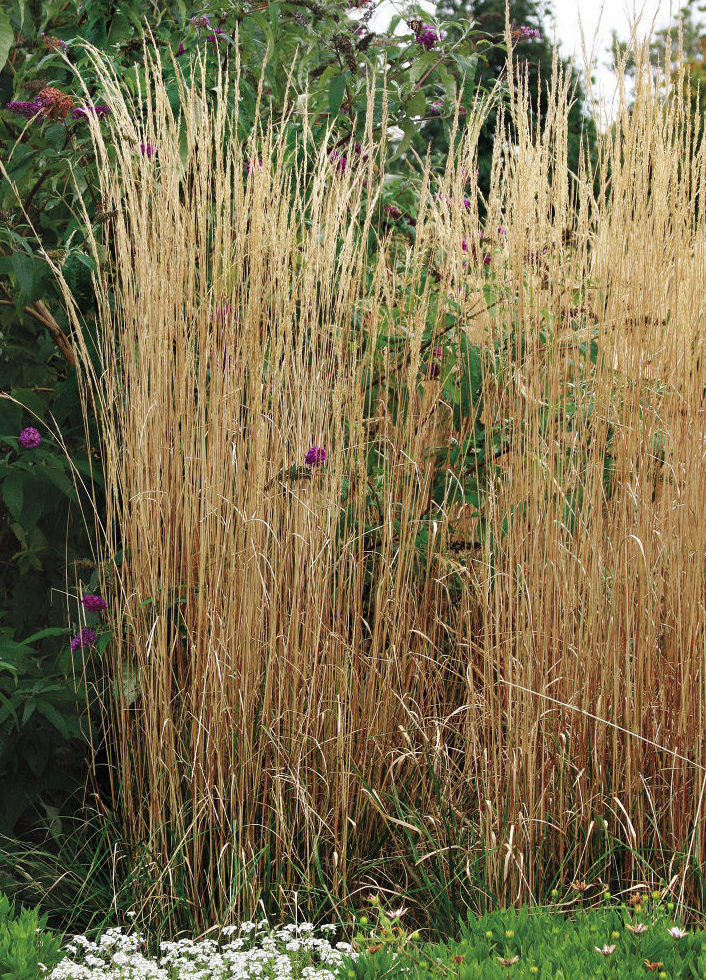
Cool-season grasses
- Blue grama (Bouteloua gracilis and cvs.)
- Feather reed grass (Calamagrostis × acutiflora and cvs.)
- Purple moor grass (Molinia caerulea and cvs.)
Are they runners or clumpers?
The habit of a grass will dictate its placement. Running grasses spread by rhizomes or stolons and make good ground covers, but they can, occasionally, take over their neighborhood. As the name implies, clumping grasses maintain their individuality and stay put where you plant them.
They can be warm- or cool-season plants
Just because your grass doesn’t green up in early spring doesn’t mean it’s dead. Warm-season grasses break dormancy late in spring, put on the greatest growth in the warmest weather, and flower at the end of summer. Cool-season grasses, conversely, emerge earlier in spring and may stall out during hot and dry weather. Rainfall and cooler autumnal temperatures reinvigorate cool-season grasses.
Skip the fertilizer
Highly fertile soils result in lush growth, which may cause grasses to become overly vigorous and floppy. Wind and rain can do a number on switchgrasses too, knocking down stems into a messy heap that won’t stand up again. Tying them up before bad weather is a good idea.
Cut them back every year to make way for new growth
This can be done with your tool of choice (pruners, hedge shears, or saws). Sometimes, though, you’ll need to take on a beast of a grass with something more than your own muscle. In this case, electric hedge shears, weed whips, and even chain saws can be helpful. Cut back most grasses to 4 inches tall; short, less densely crowned grasses, such as Japanese forest grass, can be managed with hand pruners or by running a lawn mower over them.
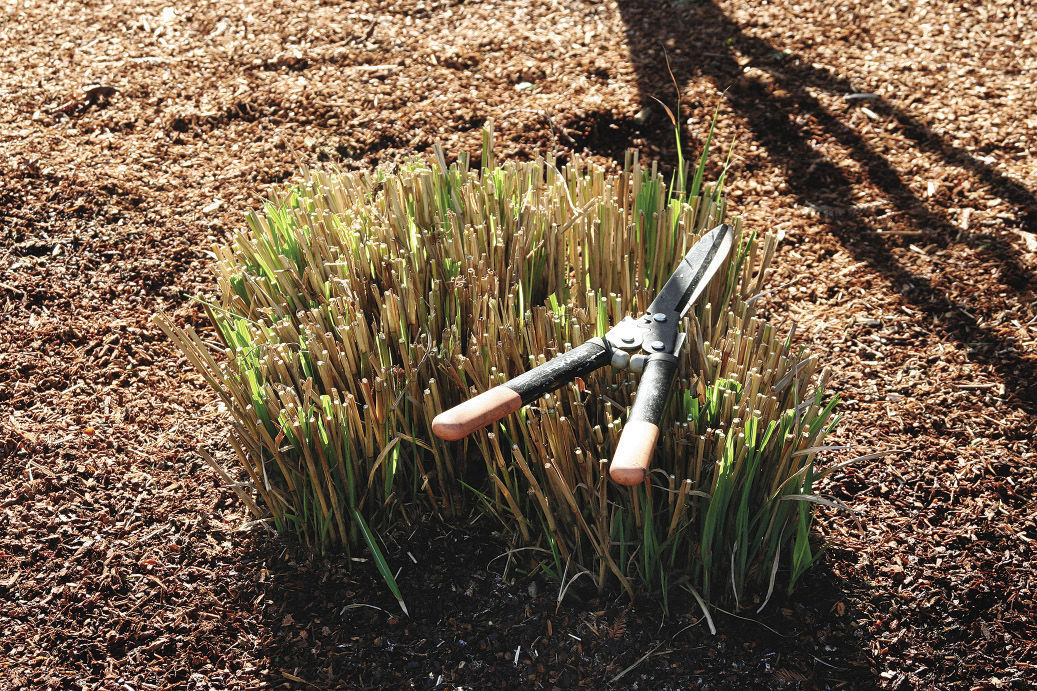 Divide overgrown grasses to keep them shapely
Divide overgrown grasses to keep them shapely

Generally speaking, grasses don’t need to be divided often: Five to seven years is a good rule of thumb. Schedule the task for spring before the new leaves begin to grow. If you miss that window, however, you can cut actively growing grasses back by a third before dividing or transplanting. To get the job done, use your stamina, perseverance, and a well-sharpened ax or garden spade to divide the clumps into smaller sections. Once you’ve whacked the plant into pieces, wash the soil off the healthy divisions and replant immediately. Purple moor grass can be a bit of a bear to divide because of its dense root system and the time it takes to reestablish. Japanese forest grass is shallow rooted and prone to frost heaving, so divide and transplant in spring to ensure that plants are well rooted before fall.
Excess moisture is a catalyst for disease
Rusts can be troublesome in wet, humid weather; root and crown rot are problems in poorly drained soils; and excessively wet cultural conditions, especially in highly shaded sites, may promote anthracnose and leaf spots. Planting in full sun (where appropriate) in well-drained soil and minimizing overhead irrigation are helpful in keeping diseases at bay.
Deer avoid them; rabbits don’t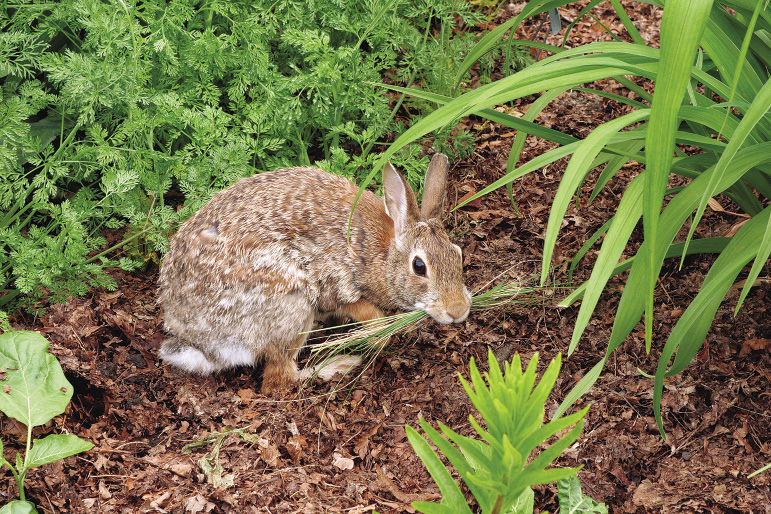

Most grasses are touted as deer resistant, and I have no firsthand experience to doubt this; however, I have seen major deer browsing on switchgrass. Ground burrowers, such as gophers and voles, can be pesky, feeding on grass roots throughout the year. Rabbits can be troublesome too. In late afternoon, like a page from Watership Down, rabbits flocked into the test gardens to graze on feather reed grass, American beakgrain (Diarrhena americana), Japanese forest grass, and switchgrass.
Richard Hawke is the plant evaluation manager at the Chicago Botanic Garden in Glencoe, Illinois.
Photos: courtesy of Richard Hawke, Brandi Spade, Bill Johnson, courtesy of Jim Ault, Howard Rice/gapphotos.com, millettephotomedia.com, Michelle Gervais, Kerry Ann Moore, Genevieve Schmidt, Danielle Sherry, Intrinsic Perennial Gardens, courtesy of highcountrygardens.com, courtesy of North Creek Nurseries
Sources
- High Country Gardens, Santa Fe, N. Mex.; 800-925-9387; highcountrygardens.com
- Klehm’s Song Sparrow Farm & Nursery, Avalon, Wis.; 800-553-3715; songsparrow.com
- Venero Gardens & Nursery, Shorewood, Minn.; 952-474-8550; venerogardens.com
Fine Gardening Recommended Products

Gardener's Log Book from NYBG
Fine Gardening receives a commission for items purchased through links on this site, including Amazon Associates and other affiliate advertising programs.

Razor-Back Potato/Refuse Hook
Fine Gardening receives a commission for items purchased through links on this site, including Amazon Associates and other affiliate advertising programs.

The New Organic Grower, 3rd Edition: A Master's Manual of Tools and Techniques for the Home and Market Gardener, 30th Anniversary Edition
Fine Gardening receives a commission for items purchased through links on this site, including Amazon Associates and other affiliate advertising programs.

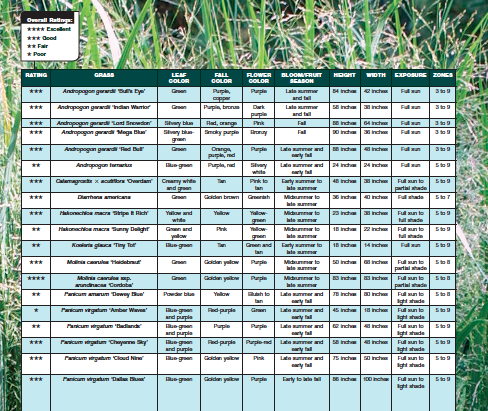


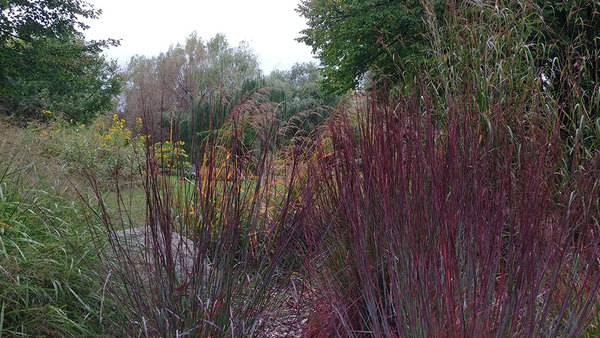














Comments
Log in or create an account to post a comment.
Sign up Log in